#wisconsin driftless area
Text


d r i f t l e s s
3 notes
·
View notes
Link
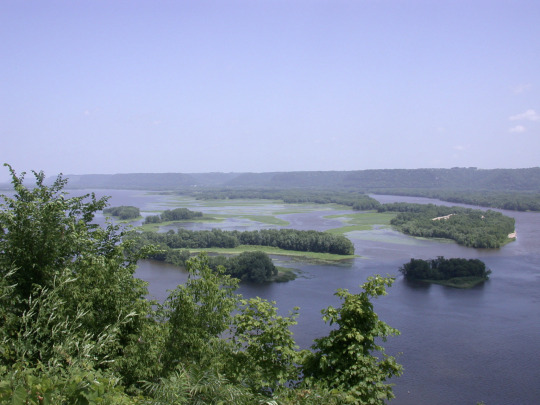
Upper Mississippi River National Wildlife and Fish Refuge.
Excerpt from this story from Madison.com:
A federal appeals panel heard arguments Wednesday in a case involving a controversial power line through southwest Wisconsin that could influence future permitting decisions on lines considered critical for a clean energy transition.
Conservation groups oppose the line, known as Cardinal-Hickory Creek, which would run 102 miles between Dubuque, Iowa, and Middleton. They argue it is unneeded and too expensive, would mar the Driftless landscape and cannot legally cross the Upper Mississippi River National Wildlife and Fish Refuge.
Utilities building the project at a cost of more than $500 million say it will improve reliability and deliver clean energy to places where it’s needed, while industry groups and academics argue the electric grid needs far more such long-distance lines to wean itself off fossil fuels.
The utilities are seeking to overturn U.S. District Court Judge William Conley’s ruling that the environmental review for the line was inadequate and that the project is incompatible with the wildlife refuge.
Conley barred the utilities from building within the 260,000-acre refuge, effectively blocking the planned river crossing, and ruled that a proposed land exchange cannot be used “to evade Congress’ mandate” for the refuge, which covers 261 river miles between Rock Island, Illinois, and Wabasha, Minnesota.
While they have not presented any alternative routes, the utilities have continued construction on either side of the river, spending at least $337.5 million, according to the most recent quarterly report to state regulators.
Opponents have asked the court to overturn Conley’s ruling that utilities can build outside of the refuge, which he called an “orchestrated train wreck.”
The appeals panel, composed of two Republican appointees and one Democratic appointee, appeared skeptical of the argument that the Fish and Wildlife Service could sidestep statutory requirements with a land swap.
#Upper Mississippi River National Wildlife and Fish Refuge#electricity transmission grid#Wisconsin#driftless area
4 notes
·
View notes
Text
2024 Cross Country Trip #4
Continuing along the River Road we entered Wisconsin with our first stop at the The Dickeyville Grotto & Shrines that are located on the grounds of the Holy Ghost Parish. They are the works of Father Matthias Wernerus, a German-American priest who served the parish from 1918 until his death in 1931. The main Grotto is an artificial cave created out of stone, mortar, and brightly colored materials…
0 notes
Text
Nine years since the Post Pepin Peregrination, my three speed bike tour
Pondero’s Rivendell Quickbeam (left) and my Raleigh Wayfarer on the La Crosse River Trail
Recently on the venerable “For the Love of English Three Speeds” thread on Bike Forums (over 27,000 posts over 14 years!) someone asked, “Has anyone toured on a three-speed?” I like these questions because they are a break from the navel-gazing that sometimes clogs up the thread. And despite the fact there…

View On WordPress
#driftless area#elroy-sparta trail#graveldoc#kickapoo river#la crosse#la crosse river trail#lake pepin#pondero#post pepin tour#three speed tour#wisconsin
1 note
·
View note
Text

Wisconsin driftless area 1920s
20 notes
·
View notes
Text
Driftless Area, Wisconsin...
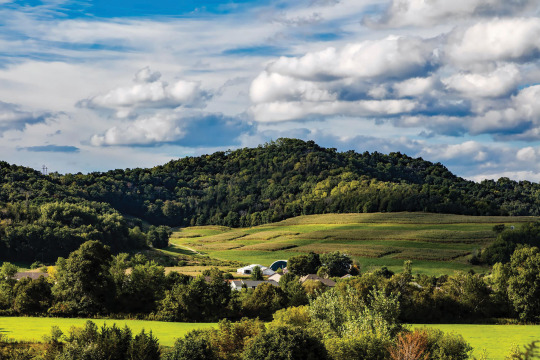
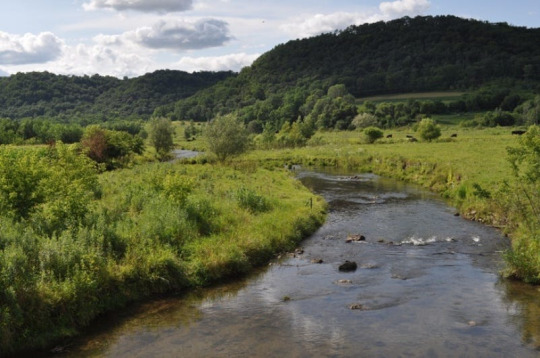




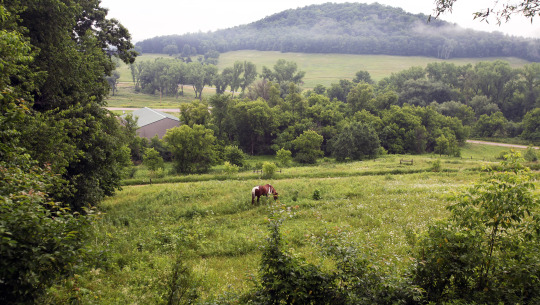

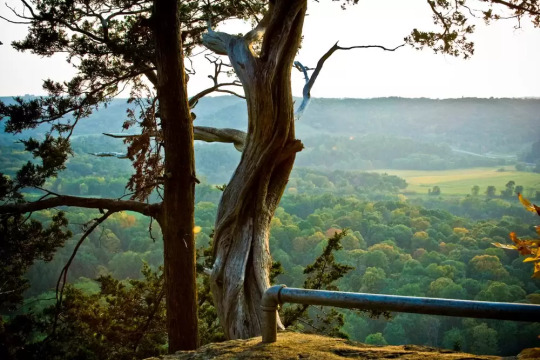
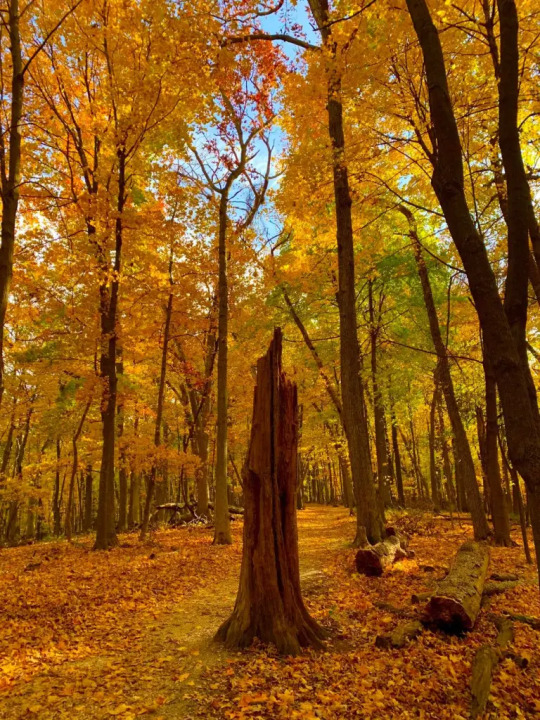
#nature#hiking#summer#autumn#wisconsin#midwest#usa#rural america#mississippi river#forest#driftless#woods#oak tree#seasons#rolling hills#spring#america
34 notes
·
View notes
Text

Driftless Area, Wisconsin 🇺🇲 Looking forward to fall getting here.
18 notes
·
View notes
Text

Even fragments of pottery can reveal cultural connections across space and time. These grit-tempered rim sherds were unearthed during excavations in the Sand Lake area near Onalaska, Wisconsin, in 2008. They all belong to the same Terminal Late Woodland Maples Mills vessel, dated to around AD 1000. This ceramic type designation was based on the vessel’s cord-roughened surface with complex cord impressions and its castellated rim top, with fairly regular grooves or spaces that resemble a castle wall. The sherds represent the first known Maples Mills castellated vessel found in the La Crosse area. The Maples Mills type is tied to central Illinois around AD 800 (Esarey 2000), but examples of the type also come from northeast Iowa at a site dating from around AD 1000 to 1050. Similar pottery with Middle Mississippian connections has been found in far southwest Wisconsin in contexts dating to AD 1100–1150 (Stoltman and Christensen 2000). The Maples Mills pottery fits with evidence of Middle Mississippian contacts, such as ceramics and feasting activity, elsewhere in the Sand Lake area as well.
Esary, Duane
2000 The Late Woodland Maples Mills and Mossville Phase Sequence in the Central Illinois River Valley. In Late Woodland Societies: Tradition and Transformation across the Midcontinent, edited by Thomas E. Emerson, Dale L. McElrath, and Andrew C. Fortier, pp. 387–410. University of Nebraska Press, Lincoln.
Stoltman, James and Ralph Christensen
2000 The Late Woodland Stage in the Driftless Area of the Upper Mississippi Valley. In Late Woodland Societies: Tradition and Transformation Across the Midcontinent, edited by Thomas Emerson, Dale McElrath, and Andrew Fortier, pp. 494–524. University of Nebraska Press, Lincoln.
#archaeology#archeology#woodland pottery#woodland ceramics#Maples Mills Woodland pottery#Maples Mills Woodland ceramics
8 notes
·
View notes
Video
Over and Under Wisconsin por Nomad of Mid-America
Por Flickr:
The Milwaukee Road oriented its Milwaukee-Twin Cities mainline with a general northwesterly heading across Wisconsin until it hit the foreboding town of Tunnel City, where it made a hard left and punched through 1,330(ish) feet of Driftless rock to follow the easy contour of the La Crosse River on the other side down into the Mississippi River Valley. The Tunnel City tunnel--in its 2nd incarnation at this location--was bored in 1874 and subsequently modified and modernized, passed down through the Milwaukee's numerous business transactions to the Soo Line and later Canadian Pacific, where it remains a vital asset on CPKC's international mainline connecting Chicago, the Twin Cities, and Canada. #149, with its autos and intermodal from Chicago's Bensenville Yard to the Vancouver area, is the hottest freight train on the railroad, but its westward progress on this occasion has been hampered by numerous Amtrak meets and conservative dispatching. With evening shadow growing ever longer, the train finally has clear signals advancing its expedited journey and is finally back to making time as the industrious beaver shielding the nose on the historically painted lead locomotive guides 149 out of the tunnel's west portal and bends toward La Crosse.
2 notes
·
View notes
Text
The Driftless Region
The Driftless Area refers to the hilly landscape topography of southwestern Wisconsin. This area was left untouched by the last glacier that covered most of Wisconsin, resulting in its hillier and more rugged features. It is without the “drift” left by glaciers so it is “driftless.”
About 15,000 years ago, and several times during preceding ice ages, glaciers flowed out of Canada as far south as…

View On WordPress
2 notes
·
View notes
Photo

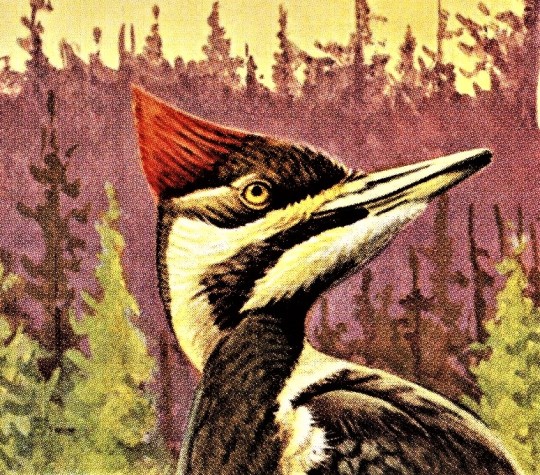

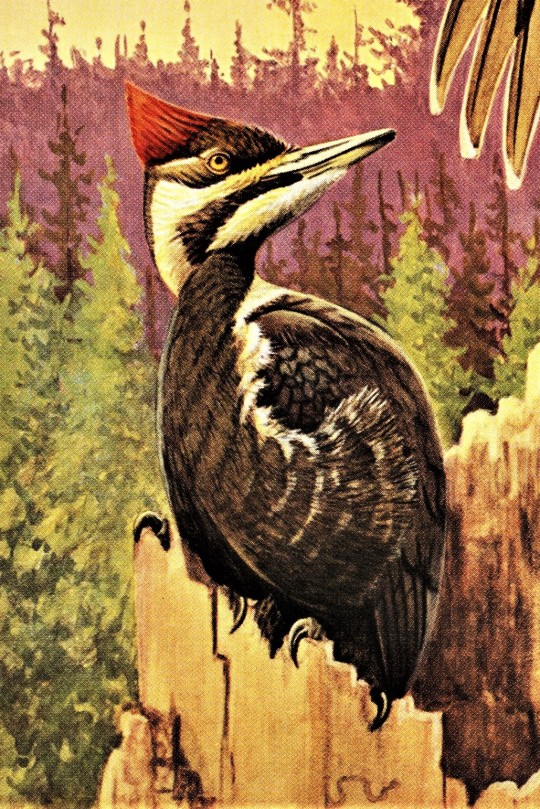

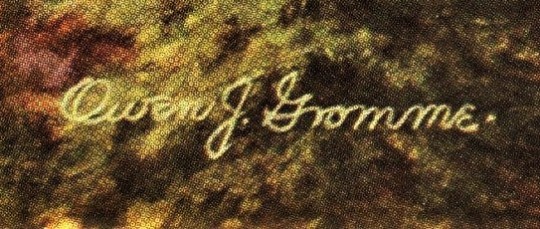
A Pileated Feathursday
If you spend an amount of time in Wisconsin’s Northwoods or Driftless Area, you are bound to spot one of these giant beauties whacking away at a tree. The Pileated Woodpecker is the largest woodpecker in North America at about 16 to 19 inches, with a wingspan that can be almost 30 inches across. While most other woodpeckers make a rapid tapping sound when at work, these brawny lumberjacks, with their bright-red Mohawks and their mighty beaks, make a slower, deeply resonant drumming that sounds like an avian construction site. While carving out nests in dead trees, Pileateds have been known to break small trees in half!
This image is from a painting by Wisconsin ornithologist, conservationist, and nature artist Owen J. Gromme (1896-1991) reproduced in his outstanding 1963 book Birds of Wisconsin published for the Milwaukee Public Museum, where Gromme was curator of birds and mammals, by the University of Wisconsin Press. Our staff get a little chuckle from this painting because it looks like one woodpecker is trying to explain something to the other who is listening in rapt attention.
Read more about Gromme and his book.
View more posts from Gromme’s Birds of Wisconsin.
View more Feathursday posts.
#Feathursday#Pileated Woodpeckers#woodpeckers#Owen J. Gromme#Birds of Wisconsin#Milwaukee Public Museum#University of Wisconsin Press#bird paintings#birds#birbs!
41 notes
·
View notes
Text


1 note
·
View note
Text
At our recent booth at the Canoecopia Paddlesports Expo we still found people who are unfamiliar with the term, Driftless Area. So a very quick explanation for those of our followers who are still unfamiliar:
The Driftless Area is a 4 state area covering corners of Wisconsin, Minnesota, Iowa, and Illinois. Never covered by ice during the last ice age, (actually there were multiple glaciers that bypassed the Driftless) the area lacks the characteristic glacial deposits known as drift. Its landscape is characterized by steep hills, forested ridges, deeply carved river valleys, and karst geology with spring-fed waterfalls and cold-water trout streams. The Greater Richland Area is firmly located within these boundaries and its geographical features are very reflective of the description above.

2 notes
·
View notes
Text
I Gave My Heart To The Junkman
Yesterday I sold my best friend to a stranger for $315.
This was, of course, far less than what a 2005 Kia Sedona ought to fetch, even for scrap alone. There were certainly a lot of useful parts still tucked inside ... but beyond any question of material worth, the sentimental value was incalculable. After all, I had poured so many financial and emotional resources into this long-term relationship, and steadfastly made repairs whenever the need arose, and had shown more unflagging devotion to this soccer-mom minivan than I had for some of my boyfriends, jobs, teeth, and homes. She was my first car, and like any first love, a first car carries a special significance.
I bought my Pamela in March of 2017, springing her from a dusty little shitpot in Bonner Springs, Kansas. I paid $2300 in cash for her, and easily poured ten times that amount into repairs. In just under six years, I replaced her starter, radiator, alternator, thermostat (twice), drive shafts, brakes, catalytic converters, power steering pump, rear shocks, rack and pinion, tie rods, hub and bearing, window motor, door actuator, timing belt, alternator belt, EGR valve, purge solenoid, charcoal canister, air conditioning compressor, cooling fan, valve cover gasket, tensioner and idler pulleys, exhaust Y-valve, oxygen sensors, hood struts, coils, hoses, filters, batteries, rear window, and three camshaft position sensors. We broke down in Iowa, Colorado, Washington, and Florida. We blew tires in Wisconsin, Oklahoma, Minnesota, and Georgia. I got to know the various components of my vehicle, one by one, as they fell apart.
Last week, she failed to start. In and of itself, this wasn't anything new, as she had crapped out so often in the past. But this time felt different, somehow. There was something so final about this silence. I knew, in that moment, that Pamela just didn't want to go any further. She had gone far enough.
With a heavy heart, I made arrangements with the junkman to come cart her away. I took the next few days to clean her out, retrieving all the tools, camping gear, and souvenirs I had stashed in her crates and cargo areas. The last thing I removed was the bobbing statue of Hula Girl, which I had glued to the dashboard back in Missouri. Her nose had gotten chipped in Iowa, when a sudden crosswind thwacked my camera's lens cap across her face ... but her irrepressible smile and cheerful ALOHA had accompanied me for over 99,700 miles, and I couldn't bear to leave her behind. I did, however, tear off the last few shreds of her disintegrating grass skirt, which no longer afforded her any dignity.
I sat for a long while in the driver's seat, holding the wheel that had been in my hands for thousands of hours. Its foam grip had been shredded by the stress of too many white-knuckled rides, all those times when I prayed for us to make it through blinding downpours or snowstorms or terrifying deep country two-lanes or narrow construction zones.
Sitting there, like a kid playing vroom vroom in the family car, I recounted some of our many adventures aloud. "Remember driving down the Vegas Strip? That supercell catching up with us in Valentine? That sunset in the wind farm? Heading out to the Olympic Coast? Devil's Tower? Ed Gein's place? Tinkertown? Bonneville? Waco? That refinery by Dodge City? Sunrise at Monument Valley? That one flat we got in Viroqua, and the farmer helping us change it? Dawn at Cades Cove? Those little hilltop dairy farms in The Driftless? The Badlands? The rim of Bryce Canyon? The meadow in South Park? The pueblos at Bandelier? Finding the trail at Butler Wash? The caves of Maquoketa? Picking up that hitchhiker in Dinosaur? Taking the Mountain Loop Highway up to Big Four? Morning mist on Steamboat Slough? The salmon run at Granite Falls? Taking the Alaskan Way Viaduct? Running along the Skykomish? The vultures on 312? Shiloh? Hooking up with the guys at Magnetic Springs? Going up Mt. Baker?" This went on for ages. Each memory brought to mind another, and another, experiences strung in sequence like beads on a string, a rosary of perils and deeds. After about ten minutes, my soliloquy devolved into a précis ... all I had to do was murmur "Kitty Hawk" and we returned immediately to one of the worst nights in our history, when we had to drive 700 miles through a tornado outbreak with a busted alternator and half a dozen batteries, sometimes driving blind in the rain without headlights or windshield wipers. We had so many close calls in our time together, and our survival sometimes seemed miraculous.
Finally, words failed me, and I wept. I sat there, finding myself once again broke and broken, a few weeks shy of turning forty-nine, devastated at another huge loss, crying my eyes out because my car wouldn't start.
Pamela had listened to me laugh, scream, sing. She heard my deepest secrets, my most buried fears, all the things I will never share with another living soul. She held space, literally and figuratively, as I processed early traumas, the kinds of injuries that had to be coaxed out of my soul like splinters. She kept me company as I mourned lost friendships, raged at failed opportunities, exulted over spiritual and professional victories, learned the lyrics to dozens of showtunes, and sifted through the smoldering wreckage of too many love affairs. She saw me at my very best and my very worst.
We traveled from coast to coast, crossed the Mississippi dozens of times, explored every kind of terrain in the continental US. We'd chased after tornadoes in Nebraska, dodged hailstones the size of tangerines in Oklahoma, coasted into Death Valley with squealing brakes, gunned through the Cascades on bald tires. We'd raced across salt flats and skidded out on gravel roads and slid on ice and got stuck in the mud. We climbed narrow mountain roads, corkscrewing upwards like a buggy in a Disney darkride, and were rewarded near the summits by whispering aspen groves and skies the color of lead. We followed thunderheads across hundreds of miles of cornfields, doubled back to photograph collapsing barns, got lost and found and lost again. We nearly ran out of gas on a stretch of moonlit desert, and were almost forced off the road by a madman near Mexican Hat. We saw insect swarms, murmurations of starlings, clouds rising from firs, incandescent sunsets, fogbound highways at 4:am, hazy feedlots, mine shafts, floodwaters, dust devils, wildfires. She had given me a treasury of beauty.
Pamela drove me to jobs in corporate office demolition, sanitation, construction site cleanup, disaster services, aerospace manufacturing, warehouse fulfillment, toy merchandising, and food delivery. She waited in parking lots while I went skydiving and whitewater rafting and hiking, while I ate, slept, got laid, gathered sharks' teeth, watched lions mate, and raised a circus tent. She carried me to zoos, sex clubs, cemeteries, battlefields, dormant volcanoes, dams, lighthouses, shipwrecks, museums, rodeos, waterfalls, weird roadside attractions, a nude beach, a monastery, a cassowary ranch, and the homes of countless friends. We saw Monterrey, Santa Fe, Orlando, Tukwila, Minneapolis, Fort Sumner, Little Rock, Mukilteo, Pensacola, Oso, Tulsa, Jupiter, Oakland, Bellingham, Eureka Springs, St. Louis, Mosca, Wichita, Portland, Pahrump, Ocracoke, Waco, Memphis, Sarasota, Montgomery, Estes Park, Vernal, Coeur d'Alene, Peoria, Birmingham, Lumberton, Des Moines, Topeka, Darwin, Beaverton, Bemidji, Enid, Deadwood, Hot Springs, Cullman, Austin, Ocean Springs, Chattanooga, Carlinville, Abilene, Darrington, Nashville, Moab, Pagosa Springs, McEwen, and innumerable parks, farms, rivers, and valleys. She took me to Judy Garland's birthplace in Grand Rapids and my own origin point in Ellensburg. We killed a hare near Ogallala and drove below arches made of lightning. We endured for far too long the joyless mazes of suburbia. She brought me into and back out of my homeland. She was my home at times.
Yesterday, a tow truck showed up on Reef Drive, our residence for the last four years. Pamela was marooned just behind her usual spot, along a hedge at the front of the property, in the shade of a nearby palm. A flock of scarlet ibises used to roost on her roof, and a clowder of feral kittens sometimes took shelter beneath her when it rained. There was a big rectangle where the grass had long ago given up and stopped growing. All of this was about to change.
The junkman was a friendly, toothless old chap named Thomas, and he had been doing this job for decades. His skin had been leathered by the sun, his hair bleached into straw, and save for the ball cap and tee shirt he looked exactly like a Gold Rush prospector. On his flatbed slumped a '71 Ford Bronco which had clearly seen better days. In any other circumstances, I'd be delighted to photograph such a wreck ... its windows were blown out, most of its panels were rusted, and it had an appealing patina of green mold, the sort of picturesque decay that I've spent decades documenting. But now it all seemed just too sad for words ... two old vehicles, far past their prime, being taken out to pasture. I thought of how horses used to get shot if they couldn't be ridden anymore.
Thomas indicated that my car seemed to be in pretty salvageable shape, though, and that she was likely to undergo a refurb rather than being scrapped altogether. This gave me a ray of hope that perhaps Pamela might yet play a special role in somebody else's life, and that just because our road had come to an end did not mean she herself was destined for oblivion.
I told him a little about the vehicle he was buying, how famous she was, how there were loyal followers around the world who had been cheering her on for the past several years. "This isn't just a car," I said. "Pamela's been through a lot. She's special." I told him about the memoir I published last year, about how we had traveled together over the whole country and seen the most incredible sights. He nodded and smiled and feigned interest, as he pointed out the numerous papers for me to sign off on. Then he handed me a check, which seemed pitifully small in my hands, and he set about hooking my poor old hooptie onto the tow rig.
I'd witnessed this ritual so many times ... the slow humiliating whine as my baby got hoisted into position, the rattle of chains around her undercarriage, the sinking helpless feeling as the tow truck lurched forward. I had already seen her get pulled away when her radiator blew up in Boulder, when her starter crapped out in Bothell, when her fuel lines got clogged in St. Augustine. But this time was different. This time there would be no joyful reunion at the shop. I stood across the street, and the reality of the situation hit me full force. Pamela, the car who had transformed my entire life, who had freed me from a desperately unhappy stint in Kansas City, who had framed most of America in her windshield, was leaving me forever. In a few minutes, she would disappear, and that would be that.
It's different in the movies, when a love story wraps up. Your heroes ride off into the sunset together, and the music swells, and THE END appears in big fancy letters over the clouds. And as the credits roll and you stand and brush popcorn from your lap you enjoy a tidy sense of closure. There is a clear sense of something having been finished, of a narrative having reached its rightful conclusion. My last few minutes with this minivan, on the other hand, felt weirdly anticlimactic and unsatisfying. I caught a few seconds of video on my phone as the tow truck began its journey. Then I just stood in the middle of the road with my arms hanging limply at my sides and watched as the most meaningful possession of my life rolled away, growing smaller and smaller until she reached the end of the block. And then the tow truck rounded the corner, and left my view altogether, and my Pamela was finally gone.
"Goodbye, old girl," I said, wiping my eyes. "Goodbye." Then I went back to my studio, returned to my easel, picked up a brush, and began the search for a new frontier.
2 notes
·
View notes
Text

One of first mushrooms I found that started me down this journey were these golden oyster mushrooms, Pleurotus citrinopileatus, I spotted on a trip to the Driftless area in Wisconsin.
I knew less than the basics when it came to mushrooms, but I had heard of oyster mushrooms. I had no idea that they could be bright yellow (much less pink!) I looked up all the "look-alikes" I could find online, namely the dreaded jack-o'-lantern, Omphalotus illudens. I had to be absolutely thoroughly convinced that those mushrooms were yellow and could not in some way be interpreted as orange! I made a spore print and agonized over wether the spores were more lilac-gray or brown-gray. Finally, took a fist-full of them into the kitchen with me and dared to eat them. By some miracle, it seems I am still alive! Ultimately, golden oyster mushrooms are really a kind of mushroom that you know when you see them (or smell them!)
I'll be making a little identification and fun-facts post for my own reference a bit later.
2 notes
·
View notes
Text
The Driftless Region
The Driftless Area refers to the hilly landscape topography of southwestern Wisconsin. This area was left untouched by the last glacier that covered most of Wisconsin, resulting in its hillier and more rugged features. It is without the “drift” left by glaciers so it is “driftless.”
About 15,000 years ago, and several times during preceding ice ages, glaciers flowed out of Canada as far south as…

View On WordPress
0 notes
